
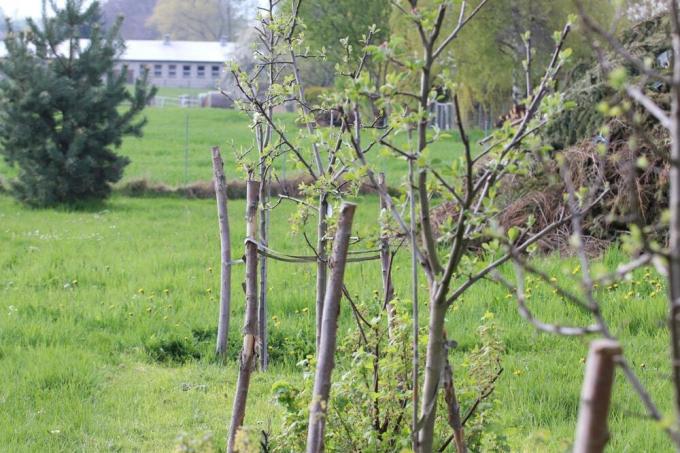
Table of contents
- Factors affecting planting time
- Limited planting time for bare root goods
- Planting times for baled goods
- Year-round planting of container plants
- Classic fall planting
- Advantages
- spring planting
- Conclusion
Due to their sometimes enormous height, trees in the garden and last but not least among all the plants have a special position. They tower over almost everything and become the central eye-catcher. The most common example is the traditional house tree with special symbolic power. There are trees with different leaf shapes and colours, with long, pointed needles, as well as evergreens and deciduous ones. Planting is mainly done in autumn and spring. When is the best time to plant depends on various factors, including sensitivity to frost.
Factors affecting planting time
Not every tree can be planted in every season. Because only if they are planted at the right time do they have the best conditions to grow and thrive optimally. The best possible time for planting depends on different circumstances.
- The most important point is the condition of the root ball
- Planting times depend on whether it is bare-root, balled or containerized
- There are also some differences in evergreen and deciduous trees and shrubs
- Frost hardiness of the tree species in question is a factor that should not be neglected
- Winter hardiness largely depends on the region and the climatic conditions
In principle, trees should preferably be planted when there is no vegetation, i.e. in autumn, even if planting in both autumn and spring is possible for most people. The ground should definitely be frost-free. An exception are somewhat more frost-sensitive woody plants, e.g. B. the Judas tree, a fantastically beautiful house tree, for which spring is the better time to plant.
Limited planting time for bare root goods
The bare-root goods are almost exclusively deciduous or deciduous species offered. These can be fruit trees such as apples, pears and cherries, as well as species that require more heat, such as apricots, nectarines or peaches. Incidentally, the apple tree is also very popular as a house tree. As the name suggests, bare root plants are sold without a root ball. This makes them particularly susceptible to dehydration.
As a result, these bale qualities in particular should be planted as soon as possible after purchase. If this is not possible and intermediate storage is necessary, this should be as short as possible and the root should not dry out during this time. It is best to store them away from the sun, draughts, and frost.
A bare root tree can usually be planted after the leaves have fallen in autumn, around mid-October to early December, and depending on the weather, in early spring around March to April. The soil should definitely be frost-free at the time of planting. Both autumn and spring planting can reduce the risk of frost or drought damage. Nevertheless, it is recommended to plant preferably in autumn.
Planting times for baled goods
So-called bale goods grow outdoors and are usually more robust and stronger. In contrast to bare-root plants, it is offered with soil balls. Digging up in the nursery initially weakens the plants because, despite all due care, their roots are damaged. But the whole thing also has advantages, because by sticking out the plants are forced to grow new ones To form roots that are particularly vital and grow well into the soil, provided that the planting is timely he follows.
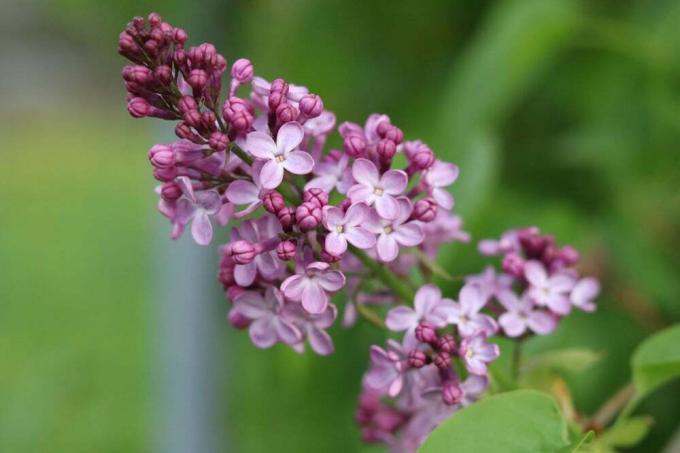
In addition, with these plants raised outdoors, there is no risk that their Roots, such as may be the case with potted ones, neither matted nor in circles have grown. Planting time for frost-hardy evergreen deciduous trees and conifers with soil balls is during their natural rest period from October to March, depending on the weather also partly in the months of September and April.
They should be in the ground by the end of April at the latest. The best months for planting are October and November, and September for conifers. In contrast to shrubs that shed deciduous trees, evergreens evaporate a lot of water even in winter and should therefore be rooted before the ground freezes through.
Year-round planting of container plants
- Container plants can basically be planted all year round
- Provided they were raised in the pot in which they are sold
- The root system must have developed within this pot
- The exception to this is periods with ground frost when planting container plants
- However, year-round planting is not always advantageous
For example, a tree that is taken out of the pot in summer and planted in the warm and dry soil has a much harder time growing than one planted at normal fall or spring planting times becomes.
Tip:
Potted plants offered in stores are not necessarily container plants, because also in the field Engraved specimens are often placed in a pot before sale for reasons of stability and optics set.
Classic fall planting
Classic planting time, especially for hardy shrubs, is the period of vegetative rest. It starts in September and ends at the end of April. It is only interrupted by the frost period. Now all trees that are not sensitive to frost can be planted, such as cherries, plums or apples, a possible candidate as a house tree.
It doesn't matter whether it is bare-root, balled or containerized. Evergreen deciduous and coniferous trees react particularly positively to early autumn planting. Even if many trees have now lost their foliage and look as if they are in the deepest phase of dormancy their roots are still active and can easily anchor themselves in the ground before the first frosts appear.
Advantages
The planting season begins in autumn. Autumn, the time of planting, adapts best to the natural rhythm of the plants. Around the 23rd Around September, plants begin to prepare for winter dormancy. They pull nutrients from the leaves and store them in their roots, which is reflected in the colorful fall foliage. The leaves eventually fall off while the roots become all the more active. Planting at this time has clear advantages over spring planting.
- The still relatively warm soil makes it easier for trees and shrubs to grow
- Before the winter, plants can still produce a lot of fiber or form fine roots
- This makes it easier for them to absorb water, nutrients and oxygen in spring
- Winter wetness also ensures good contact between the roots and the soil
- Cavities in the ground created during planting are closed
- This reduces the risk of drying out damage in spring
- Plant selection in tree nurseries or garden shops is greatest in autumn
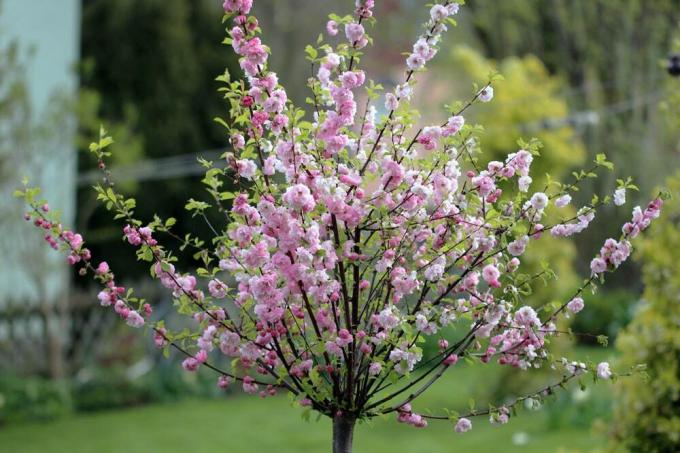
Shrubs planted in autumn practically have a head start in development compared to those planted in spring, which benefits them when they sprout again. In addition, there is a much lower maintenance and care effort, which is many times higher in spring and summer.
Tip:
The time between buying and planting the trees should always be as short as possible, which is 100% the case when planting in the fall.
spring planting
Buying and planting in the spring, between March/April and May, is particularly suitable for trees or shrubs that are generally or especially in the first few years more sensitive to frost. These include nectarine, apricot, peach, beech or hornbeam, laurel cherry, but also a winter-green magnolia or conifers such as the yew. In spring, freshly planted trees and shrubs cause problems, especially unusually high temperatures combined with drought. Plants that have not yet developed fine roots at this point are now suffering from enormous stress.
In addition, deciduous trees now have to develop new shoots, leaves and flowers in addition to roots, which requires a lot of energy. Nevertheless, spring remains the better planting alternative for sensitive trees, because it offers better protection against drought damage caused by frost. In addition, during this time they are not exposed to autumn or winter storms and there is no risk of stress cracks due to strong temperature fluctuations. However, the need for care, especially with regard to the water requirement, is slightly higher than in autumn.
Conclusion
When it comes to planting deciduous, coniferous and fruit trees, autumn is undoubtedly the best time. It makes no difference whether the tree is bare-rooted, balled or in a container, or whether it is an evergreen or deciduous tree. On the other hand, it is still better to plant more sensitive trees and shrubs in spring. Even if the maintenance effort is a little higher, the young trees will thank you with strong growth, lush flowers or a variety of delicious fruits. Because not only a symbolic house tree should grow and thrive over many years and receive its very special appearance.
 garden editorial
garden editorial I write about everything that interests me in my garden.
Learn more about planting times

When do you plant fruit trees? 7 tips for planting time
Fruit trees have different requirements when it comes to the ideal planting time. It is important to take differences into account and to meet the respective needs. With the right expert tips, it works without any problems.
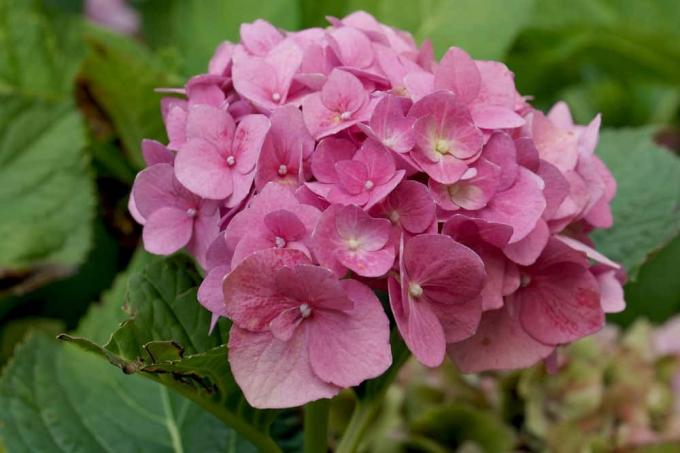
Hydrangea planting time: when is it ideal?
When is the best time to plant hydrangeas? We get to the bottom of the question and present you with the advantages and disadvantages of each season!

Viticulture | When is the best time to plant vines?
The right planting time is an important milestone in successful viticulture. Don't guess anymore when to plant vines for a bounty of juicy grapes. Read all the information about the best time to plant wine here. This guide reveals why a distinction should be made between bare-root and potted vines when choosing the date.

When do you plant hedges? The best planting time for hedge plants
For years, hedges have served as natural privacy and wind protection or as evergreen property borders for house and garden. When it comes to setting up a good privacy screen in a short time, high hedges are the most desirable. You can also choose between low-growing, evergreen, deciduous and flowering hedges, some with different planting times.
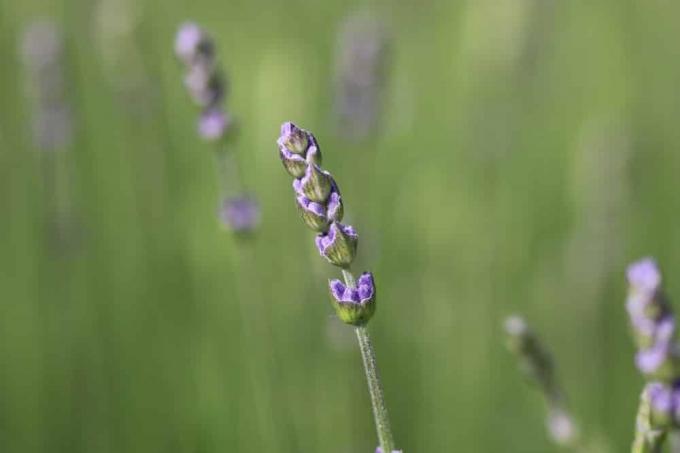
When to plant lavender? The ideal planting time is spring/autumn
Originally native to the western Mediterranean region, lavender has been unfolding its aromatic scent in domestic gardens for several centuries. Passionate hobby gardeners only have to pay a little attention to the planting in order to enjoy the easy-to-cultivate bushes for many years.
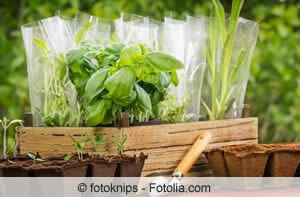
Best planting time for herbs in the garden and on the balcony
Freshly harvested herbs from our own cultivation are unsurpassed in aroma and taste. The key to a premium quality harvest is choosing the best time to plant the young plants in the ground. You can find out the best time to plant herbs in the garden and on the balcony here.
